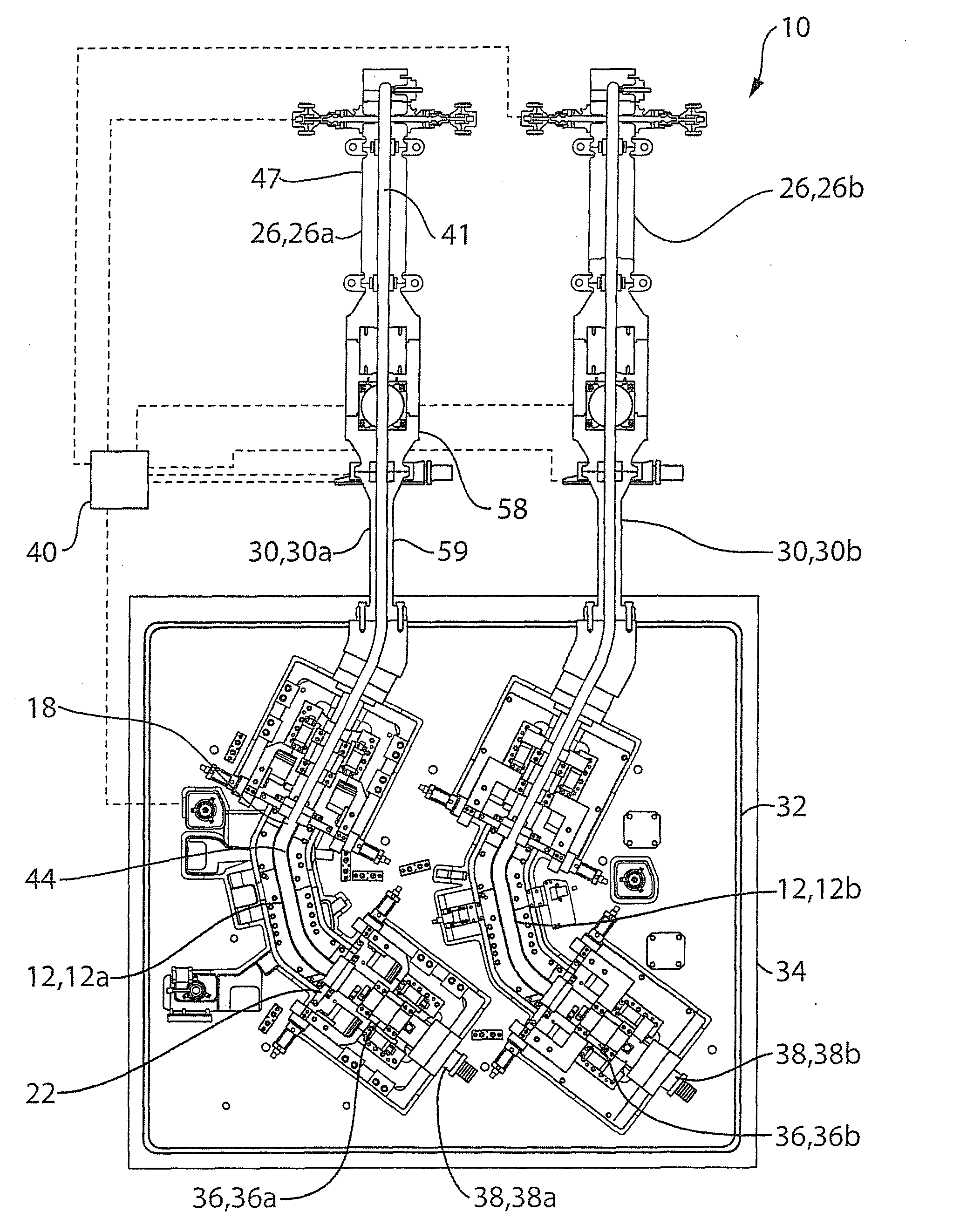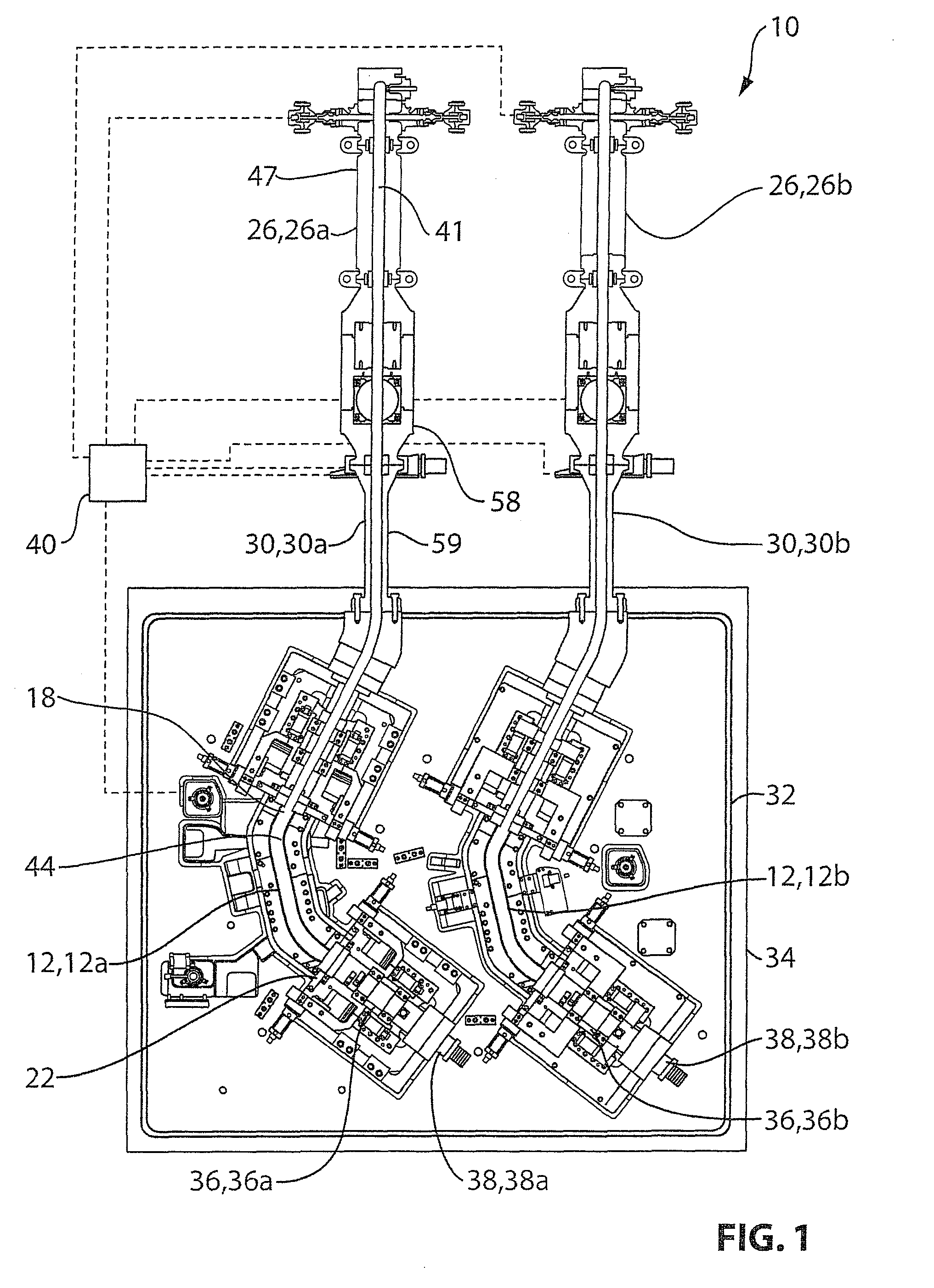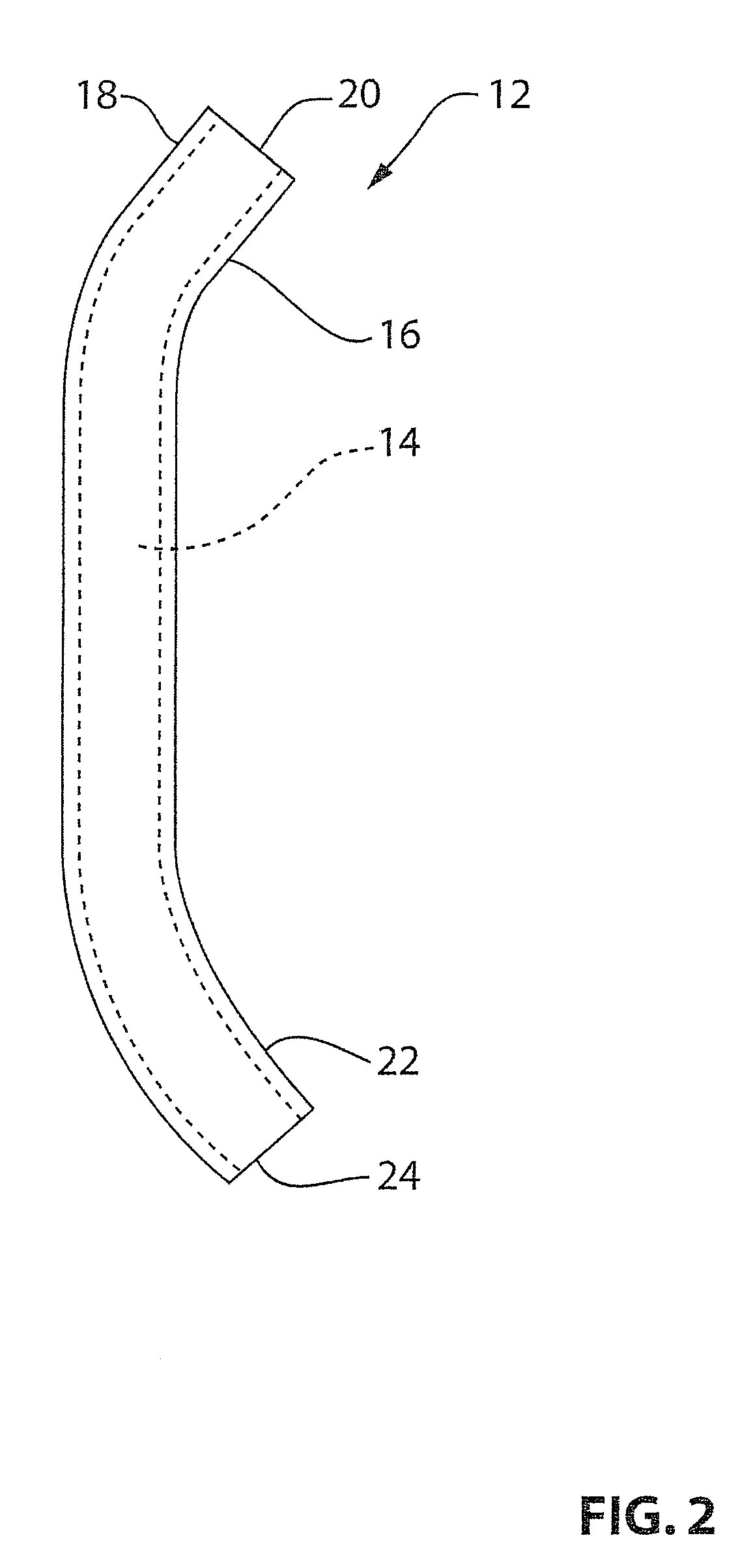Explosion forming system
a technology of forming system and forming plate, which is applied in the direction of forging press, forging/pressing/hammering apparatus, manufacturing tools, etc., can solve the problems of reducing the production rate of parts, requiring significant amount of energy to operate, and the proposed system for this purpose suffers several problems, so as to reduce the power required for pressing the die, reduce the capital cost, and reduce the effect of tonnag
- Summary
- Abstract
- Description
- Claims
- Application Information
AI Technical Summary
Benefits of technology
Problems solved by technology
Method used
Image
Examples
Embodiment Construction
[0087]This application incorporates by reference in its entirety the contents of U.S. application Ser. No. 12 / 447,727 filed Apr. 29, 2009 and entitled “Method and Mould Arrangement for Explosion Forming.
[0088]FIG. 1 shows an apparatus 10 for modifying a work piece 12 in accordance with a preferred embodiment of the invention. The apparatus 10 uses fluid pressure generated by an explosion (resulting from igniting combustibles shown at 47) to modify the work piece 12. In the preferred embodiment the apparatus 10 is configured to generate a shock wave 42 (FIG. 3) from the explosion and the pressure from the shock wave modifies the work piece 12, as discussed in greater detail below. However, the apparatus 10 may also be operated to modify the work piece 12 even if the explosion does not generate a shock wave, as discussed in greater detail below.
[0089]The apparatus 10 may perform different types of operation on the work piece 12 to modify the work piece 12 in one or more different ways...
PUM
| Property | Measurement | Unit |
|---|---|---|
| speed | aaaaa | aaaaa |
| speed | aaaaa | aaaaa |
| pressure Psw | aaaaa | aaaaa |
Abstract
Description
Claims
Application Information
 Login to View More
Login to View More - R&D
- Intellectual Property
- Life Sciences
- Materials
- Tech Scout
- Unparalleled Data Quality
- Higher Quality Content
- 60% Fewer Hallucinations
Browse by: Latest US Patents, China's latest patents, Technical Efficacy Thesaurus, Application Domain, Technology Topic, Popular Technical Reports.
© 2025 PatSnap. All rights reserved.Legal|Privacy policy|Modern Slavery Act Transparency Statement|Sitemap|About US| Contact US: help@patsnap.com



